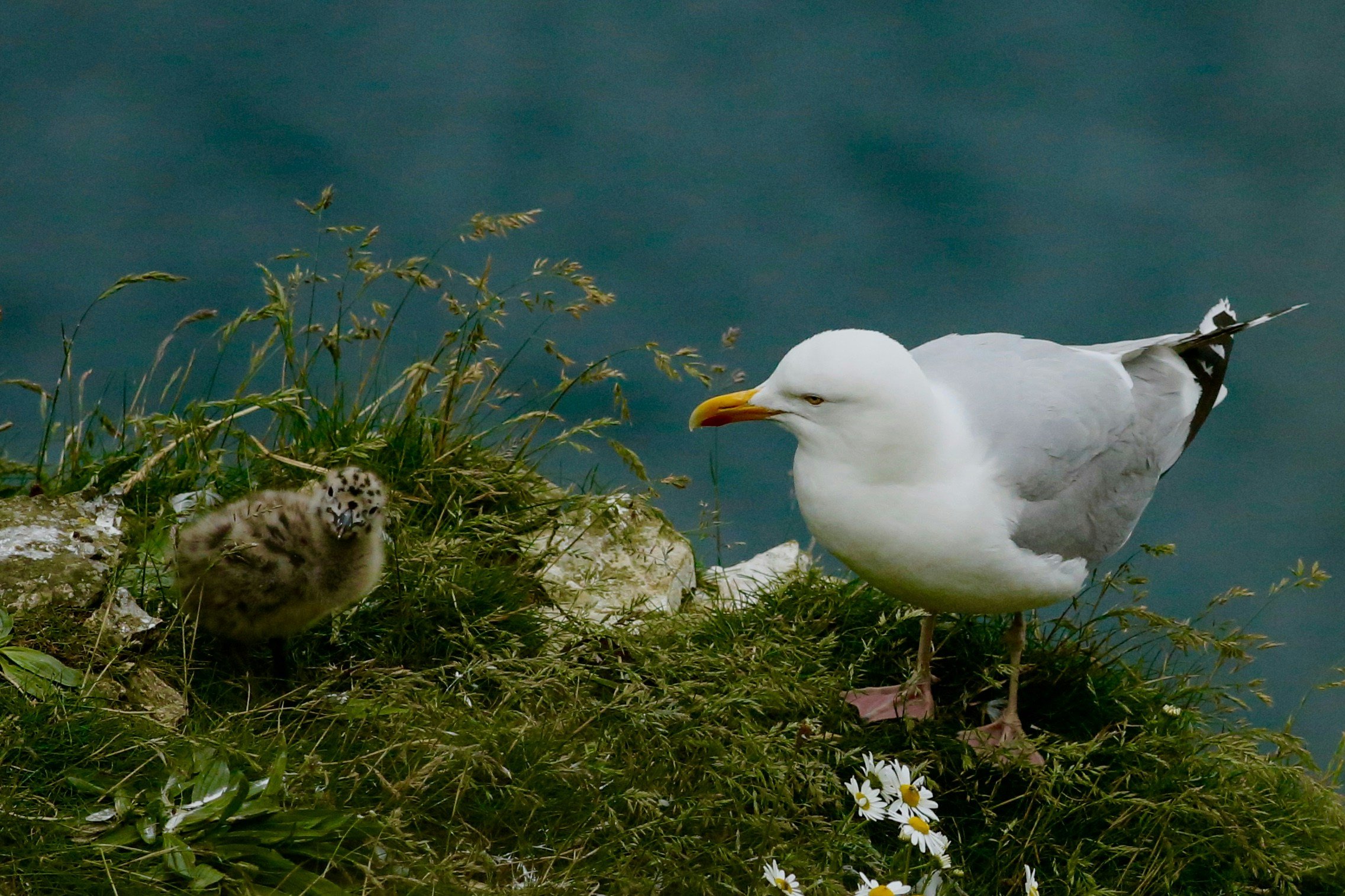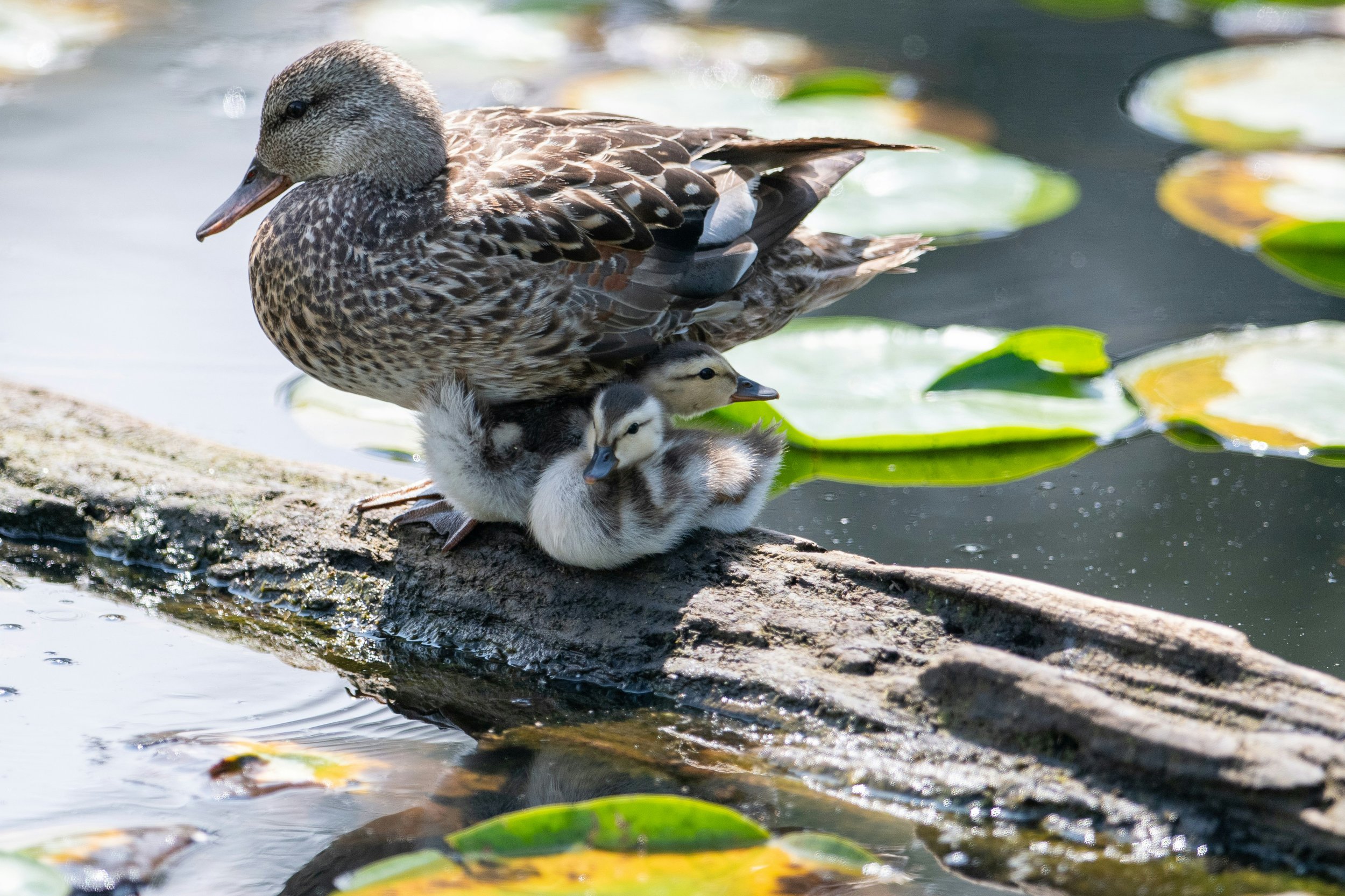
Library
Browse resources published by our research team.
In addition to full texts of our peer-reviewed articles, our library includes research digests that break down our peer-reviewed articles; in-depth reports that thoroughly examine a topic; commentaries that explain the significance of particular issues in wild animal welfare science; and short communications that briefly survey a field or topic.
Wild Animal Initiative adheres to Open Science TOP Guidelines. Read more here.
Rehabilitating wild animal welfare: A focus on veterinary rescue and rehabilitation interventions
Beaulieu, M. (2025). Rehabilitating wild animal welfare: A focus on veterinary rescue and rehabilitation interventions. Research in Veterinary Science, https://doi.org/10.1016/j.rvsc.2025.105582
Authored by Wild Animal Initiative’s Research Manager, Michaël Beaulieu, this paper was published in the April 2025 issue of Research in Veterinary Science.
Abstract
Conservation considerations are often put forward to justify wildlife veterinary interventions.
Paradoxically, the conservation impact of such interventions is often uncertain.
These interventions, however, have a clear impact on the welfare of wild animals.
This confusion is likely related to the connection between animal conservation and welfare.
Veterinarians need to explicitly recognize the welfare value of their interventions on wildlife.
Plugging biologging into animal welfare: An opportunity for advancing wild animal welfare science
Michaël Beaulieu, Michaela Masilkova
Beaulieu, M., & Masilkova, M. (2024). Plugging biologging into animal welfare: An opportunity for advancing wild animal welfare science. Methods in Ecology and Evolution, https://doi.org/10.1111/2041-210X.14441
Authored by Wild Animal Initiative Research Manager Michaël Beaulieu and Michaela Masilkova, Postdoctoral Researcher at Czech University of Life Sciences Prague, this paper was published in December 2024 in Methods in Ecology and Evolution.
Abstract
Animal welfare science is currently expanding beyond its traditional boundaries, from captive animals to those living in the wild. This current development is conceptually and methodologically challenging, but it could benefit from adjacent and more established research fields. Among these fields, biologging appears to be a strong candidate, as most intrinsic, location and environmental variables collected through biologging approaches could be used to assess animal welfare in the wild.
To provide an objective view of the suitability of biologging to assess wild animal welfare, biologging was evaluated against the criteria that are currently recommended to assess animal welfare. This evaluation shows that biologging approaches could enhance animal welfare assessments in terms of completeness, informativeness and feasibility in the wild. However, their full implementation may be complicated by limitations in terms of validity, representativeness and disturbance, and by the different welfare perspectives taken by wildlife biologists using biologging approaches and animal welfare biologists.
To exploit the full potential that biologging approaches could offer to assess wild animal welfare, their current limitations need to be overcome. Towards this end, recommendations are explicitly provided to enhance the validity and the representativeness of biologging measurements as welfare indicators, while reducing disturbance. To increase the visibility and the impact of biologging studies examining wild animal welfare, we also encourage wildlife biologists using biologging approaches to adopt the same language and perspectives as those used by animal welfare biologists.
If current limitations are overcome, biologging is likely to be instrumental for the future study of animal welfare in the wild. Reciprocally, integrating animal welfare in biologging studies is expected to have a great impact on the whole biologging field by extending its current scope to a new and promising research area.
Improving wild animal welfare through contraception
Simon Eckerström Liedholm, Luke Hecht, Vittoria Elliott
Eckerström Liedholm, S., Hecht, L., & Elliott, V. (2024). Improving wild animal welfare through contraception. BioScience, https://doi.org/10.1093/biosci/biae071
Authored by Wild Animal Initiative’s Researcher Simon Eckerström Liedholm, Science Director Luke Hecht, and Vittoria Elliott of the Smithsonian Institution, this paper was published September 11, 2024, in BioScience.
Abstract
To date, research on the welfare impacts of wildlife contraceptives has mostly been focused on the potential harms of contraceptives. However, there are compelling theoretical reasons to expect direct and indirect welfare benefits of wildlife contraceptives. These positive welfare effects would be experienced by more than just the treated individuals, because per capita resource availability will increase with decreasing numbers of individuals sharing a resource. In the present article, we discuss the potential for wildlife contraceptives to alleviate resource competition and their associated negative welfare effects at different scales. These effects are expected to vary across contexts and would presumably be stronger when wildlife contraceptives are used with the explicit purpose of improving wild animal welfare. The potential for considerable welfare gains for wildlife through the targeted use of contraceptives highlights the importance of both species-specific studies on the welfare benefits of wildlife contraceptives and further research on the links between population dynamics and wild animal welfare.
Oxidative status: A general but overlooked indicator of welfare across animal species?
Beaulieu, M. (2024). Oxidative status: A general but overlooked indicator of welfare across animal species? BioEssays, https://doi.org/10.1002/bies.202300205
Authored by Wild Animal Initiative Research Manager Michaël Beaulieu, this paper was published in August 2024 in BioEssays.
Abstract
Because of their ubiquity, plasticity, and direct effects on the nervous system, markers of oxidative status may be of great value to assess animal welfare across species and conditions in the wild. However, welfare biologists have not yet seized this opportunity, possibly because the validity of these markers as welfare indicators remains questionable. A validation process was, therefore, performed here using a meta-analytical approach considering three conditions assumed to impair the welfare of animals. With very few exceptions, two of the four considered markers consistently varied across these negatively-valenced conditions. By highlighting the current underrepresentation of markers of oxidative status in animal welfare studies, and by concretely illustrating that some of these markers can consistently reflect negative affective states, this article aims to encourage biologists to include these physiological markers in their toolbox to better measure, monitor, and perhaps also improve the welfare of animals in their natural habitat.
Capturing wild animal welfare: A physiological perspective
Beaulieu, M. (2024). Capturing wild animal welfare: a physiological perspective. Biological Reviews, https://doi.org/10.1111/brv.13009
Authored by Wild Animal Initiative Research Manager Michaël Beaulieu, this paper was published in February 2024 in Biological Reviews.
Abstract
Affective states, such as emotions, are presumably widespread across the animal kingdom because of the adaptive advantages they are supposed to confer. However, the study of the affective states of animals has thus far been largely restricted to enhancing the welfare of animals managed by humans in non-natural contexts. Given the diversity of wild animals and the variable conditions they can experience, extending studies on animal affective states to the natural conditions that most animals experience will allow us to broaden and deepen our general understanding of animal welfare. Yet, this same diversity makes examining animal welfare in the wild highly challenging. There is therefore a need for unifying theoretical frameworks and methodological approaches that can guide researchers keen to engage in this promising research area. The aim of this article is to help advance this important research area by highlighting the central relationship between physiology and animal welfare and rectify its apparent oversight, as revealed by the current scientific literature on wild animals. Moreover, this article emphasises the advantages of including physiological markers to assess animal welfare in the wild (e.g. objectivity, comparability, condition range, temporality), as well as their concomitant limitations (e.g. only access to peripheral physiological markers with complex relationships with affective states). Best-practice recommendations (e.g. replication and multifactorial approaches) are also provided to allow physiological markers to be used most effectively and appropriately when assessing the welfare of animals in their natural habitat. This review seeks to provide the foundation for a new and distinct research area with a vast theoretical and applied potential: wild animal welfare physiology.
The importance of considering age when quantifying wild animals’ welfare
Hecht, L. (2021). The importance of considering age when quantifying wild animals’ welfare. Biological Reviews, https://doi.org/10.1111/brv.12769
Authored by Wild Animal Initiative’s Science Director, Luke Hecht, this paper was published in the December 2021 issue of Biological Reviews.
Abstract
Wild animals experience different challenges and opportunities as they mature, and this variety of experiences can lead to different levels of welfare characterizing the day-to-day lives of individuals of different ages. At the same time, most wild animals who are born do not survive to adulthood. Individuals who die as juveniles do not simply experience a homogeneous fraction of the lifetimes of older members of their species; rather, their truncated lives may be characterized by very different levels of welfare. Here, I propose the concept of welfare expectancy as a framework for quantifying wild animal welfare at a population level, given individual-level data on average welfare with respect to age. This concept fits conveniently alongside methods of analysis already used in population ecology, such as demographic sensitivity analysis, and is applicable to evaluating the welfare consequences of human interventions and natural pressures that disproportionately affect individuals of different ages. In order to understand better and improve the state of wild animal welfare, more attention should be directed towards young animals and the particular challenges they face.
What is the value of wild animal welfare for restoration ecology?
Jane F. Capozzelli, Luke Hecht, Samniqueka Halsey
Capozzelli, J. F., Hecht, L., & Halsey, S. (2020). What is the value of wild animal welfare for restoration ecology? Restoration Ecology, https://doi.org/10.1111/rec.13114
Authored by former Wild Animal Initiative Staff Researcher Jane Capozzelli, Wild Animal Initiative Science Director Luke Hecht, and Samniqueka Halsey, Assistant Professor in the College of Agriculture, Food and Natural Resources at the University of Missouri, this paper was published in March 2020 in Restoration Ecology.
Abstract
The restoration community continues to discuss what constitutes good environmental stewardship. One area of tension is the extent to which the well-being of wild animals should inform restoration efforts. We discuss three ways that the perspective of wild animal welfare can augment restoration ecology: strengthening people's relationship with nature, reinforcing biotic integrity, and reducing mechanistic uncertainty. The animal welfare movement elevates sentient animals as stakeholders and explores how environmental context directly impacts the well-being of individuals. Viewing wild animals through this lens may encourage people to think and act with empathy and altruism. Second, we incorporate animal welfare into the concept of biotic integrity for ecological and ethical reasons. Restoring ecosystem processes may enhance animal welfare, and vice versa. Alternatively, there may be a trade-off between these factors, requiring local decision-makers to prioritize between restoring ecosystem function and promoting individuals' well-being. We conclude by discussing how welfare can impact population recovery, thereby adding insights about mechanisms underpinning restoration objectives. Ultimately, restoration ecologists and proponents of wild animal welfare could enjoy a productive union.







